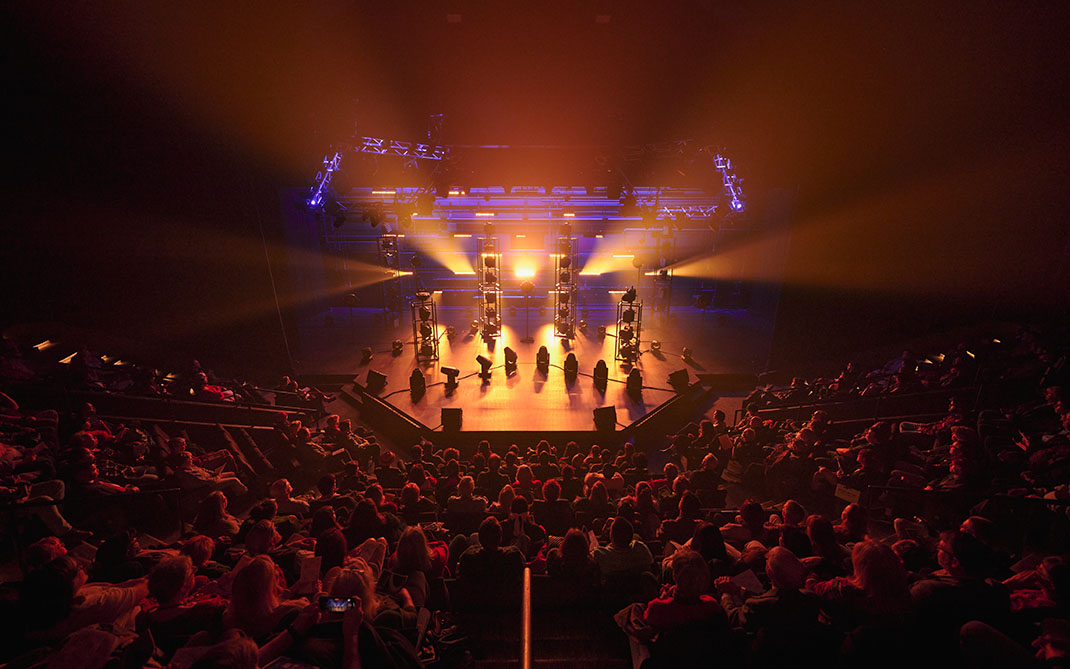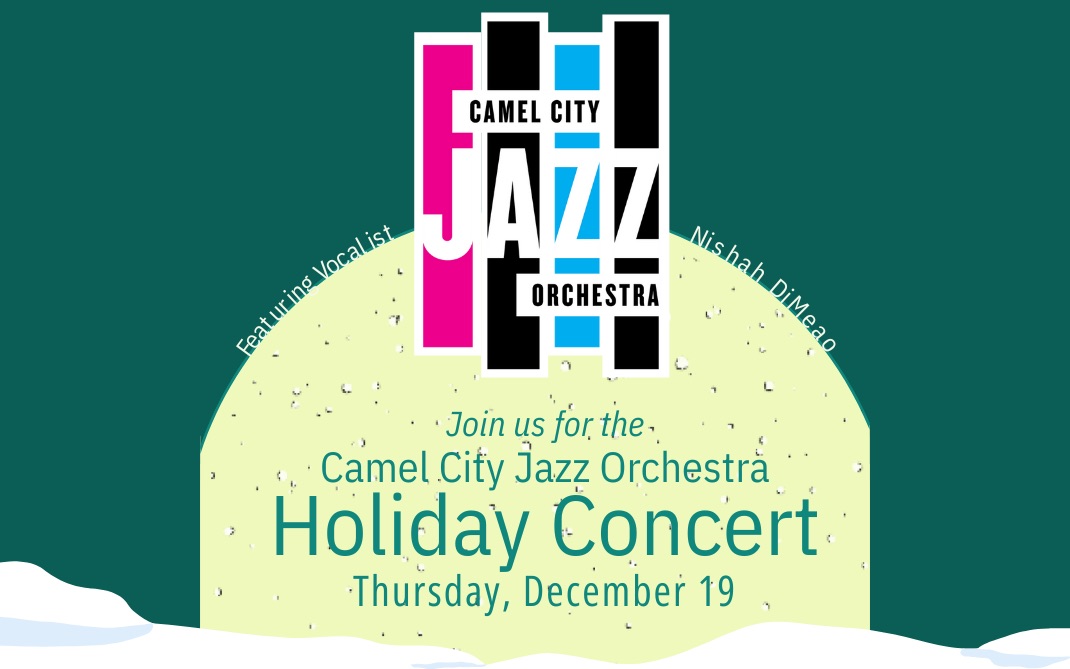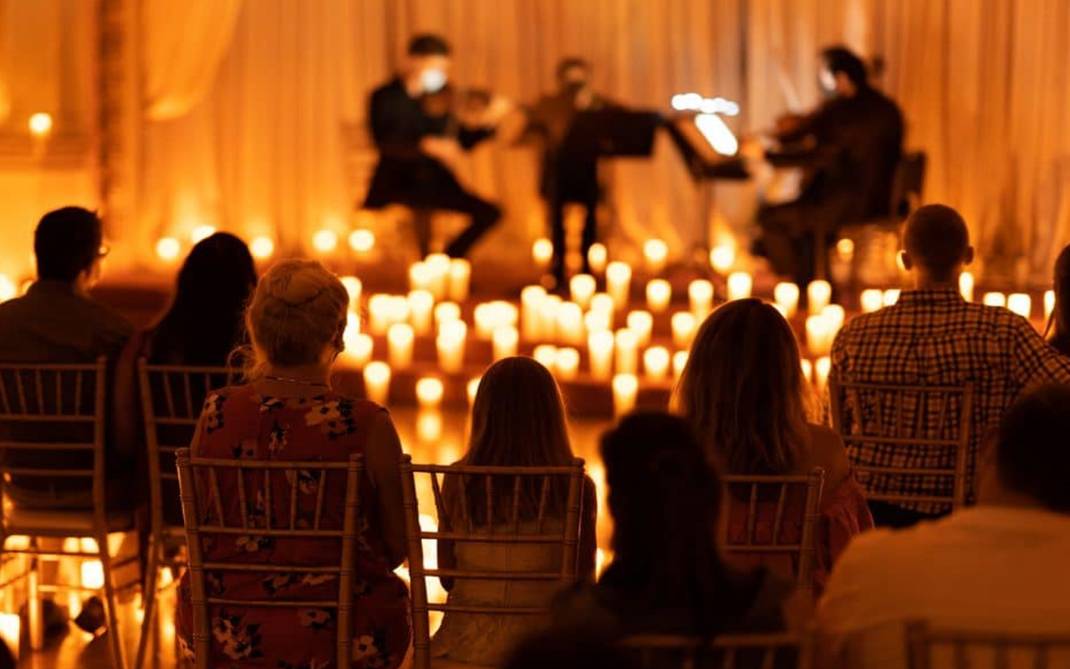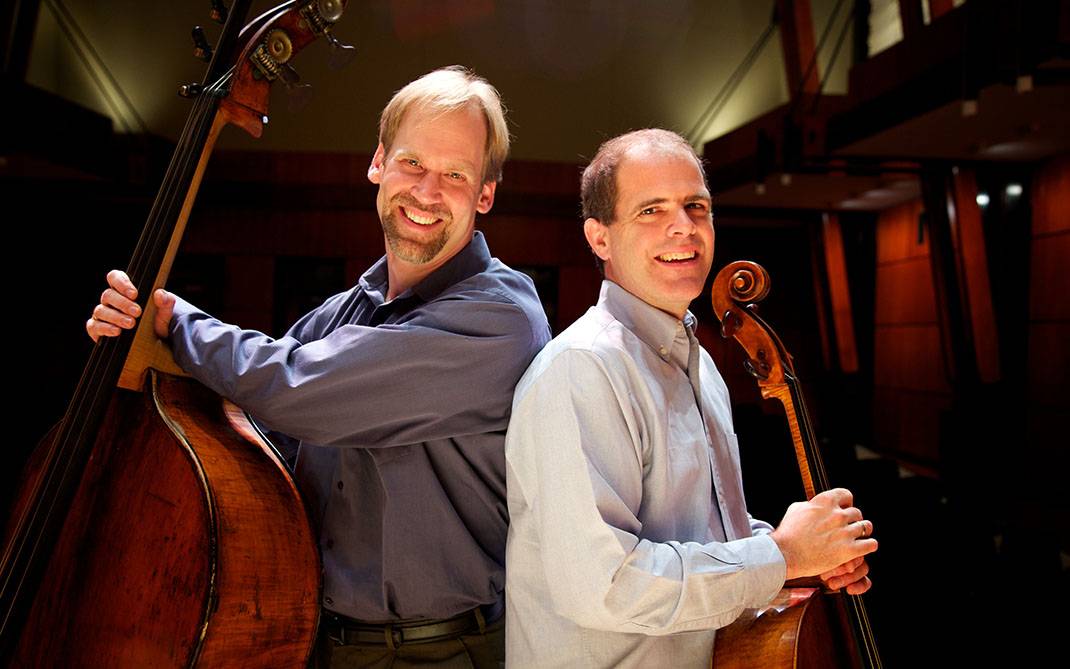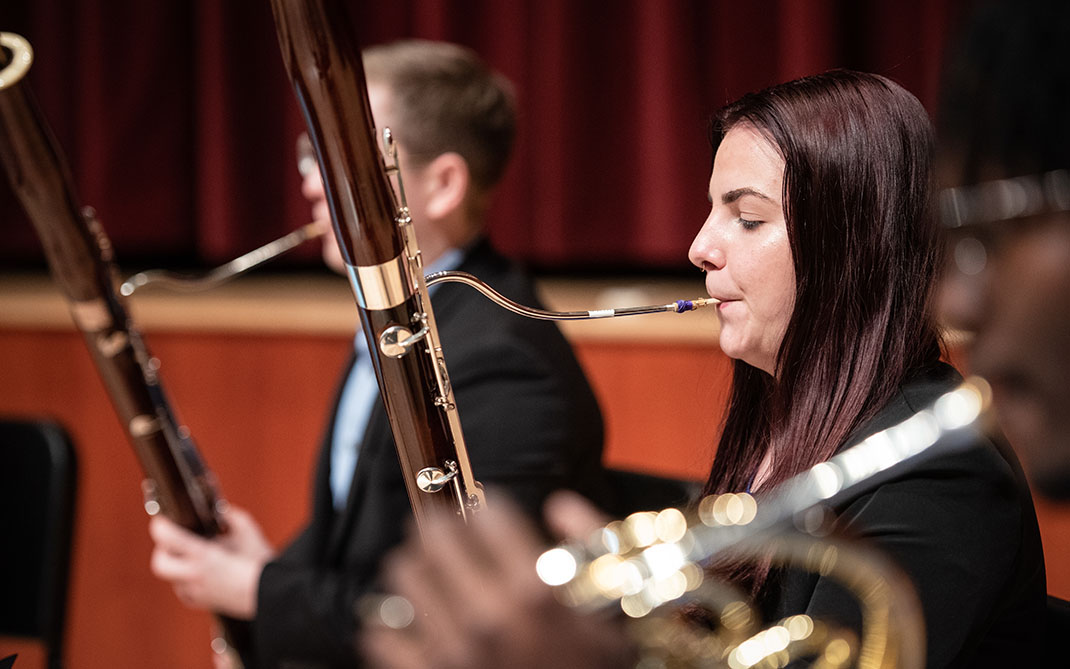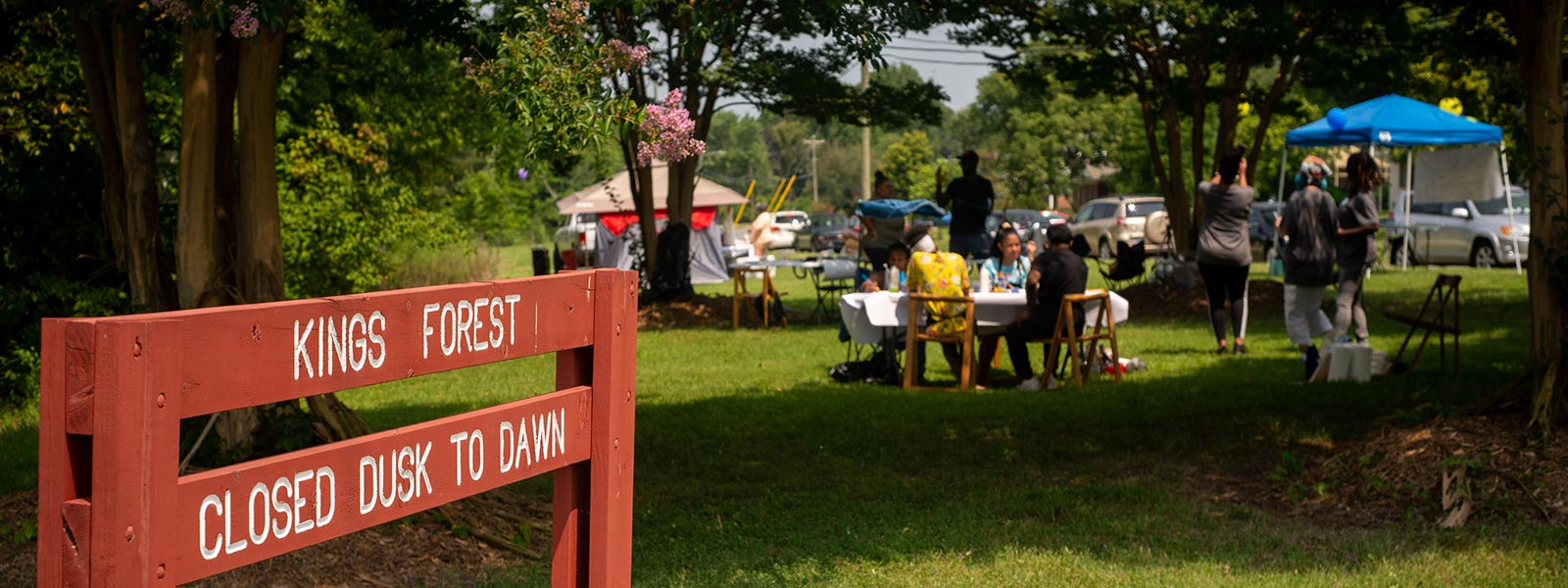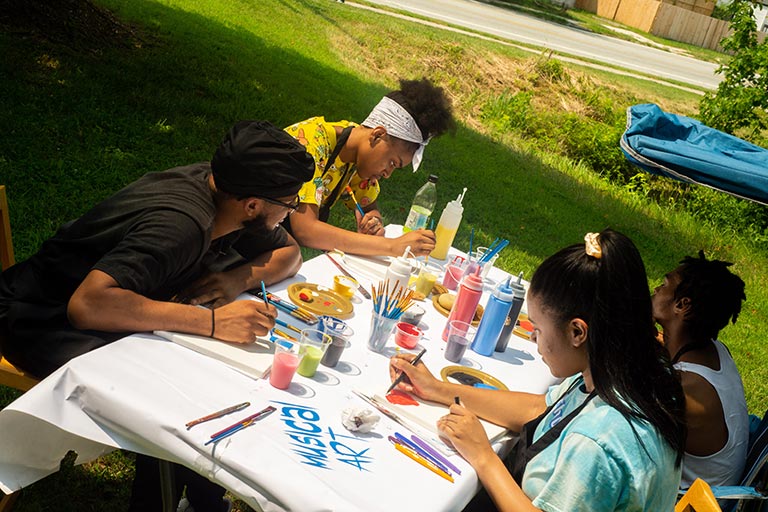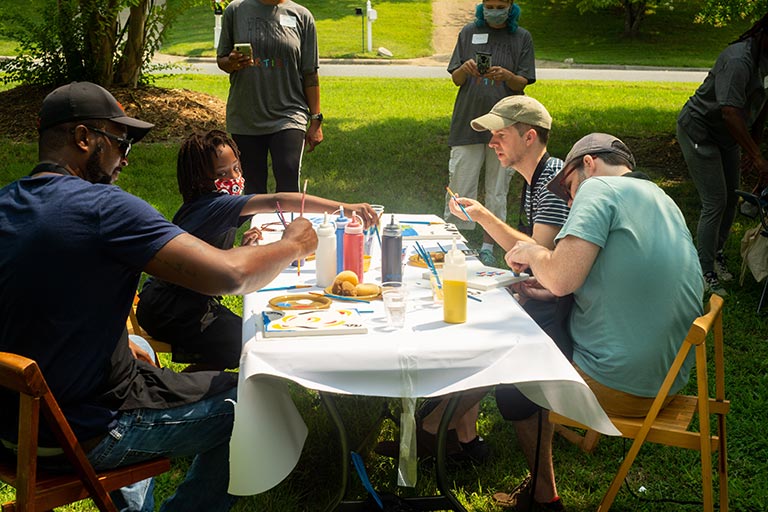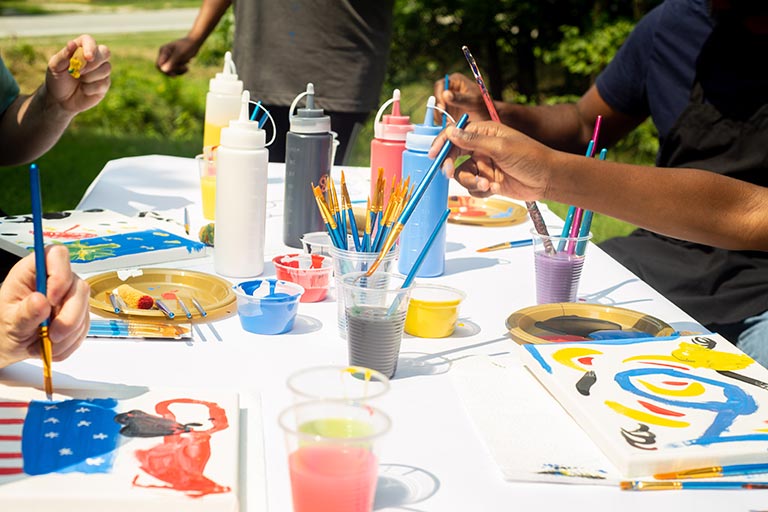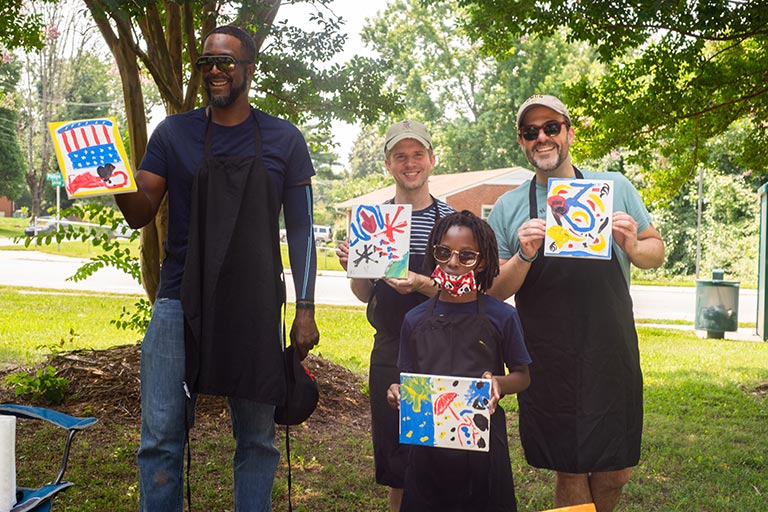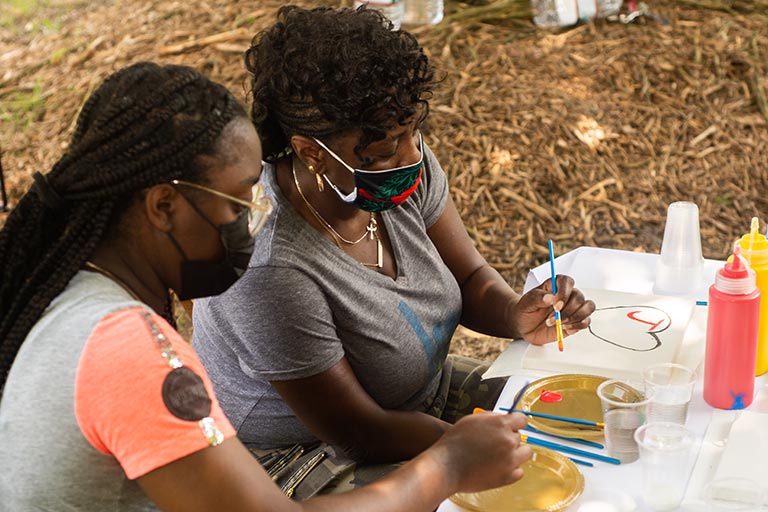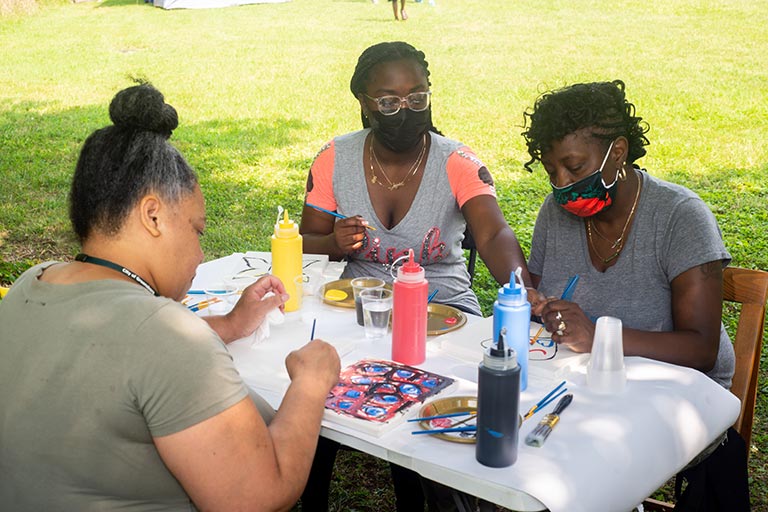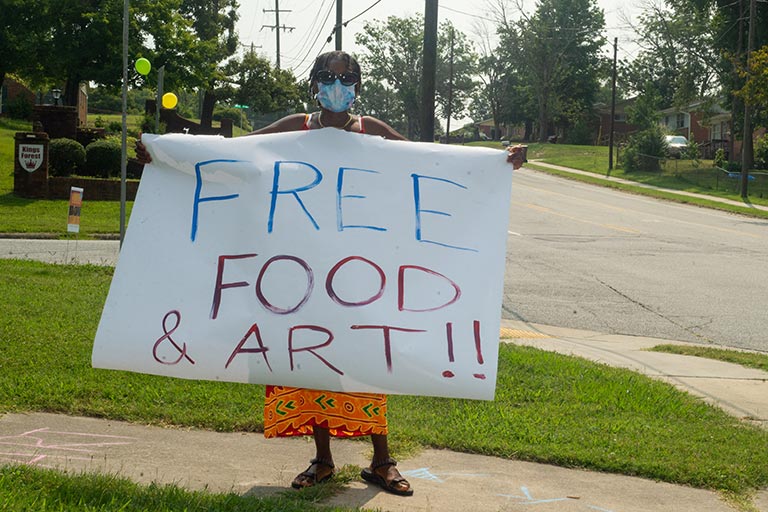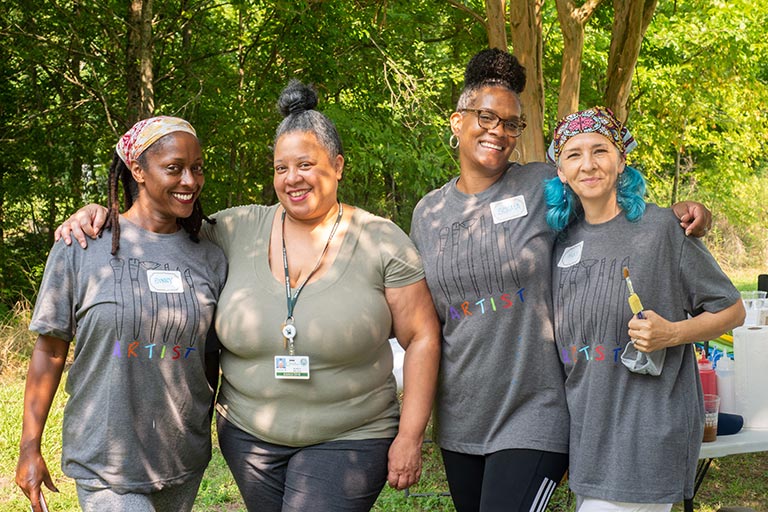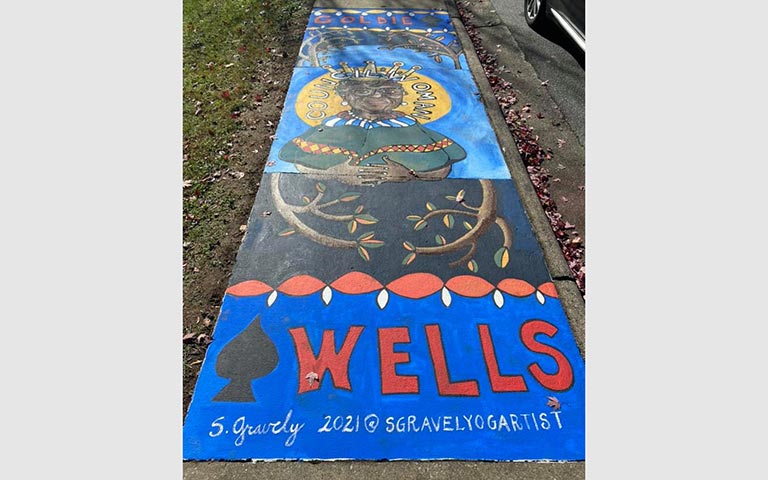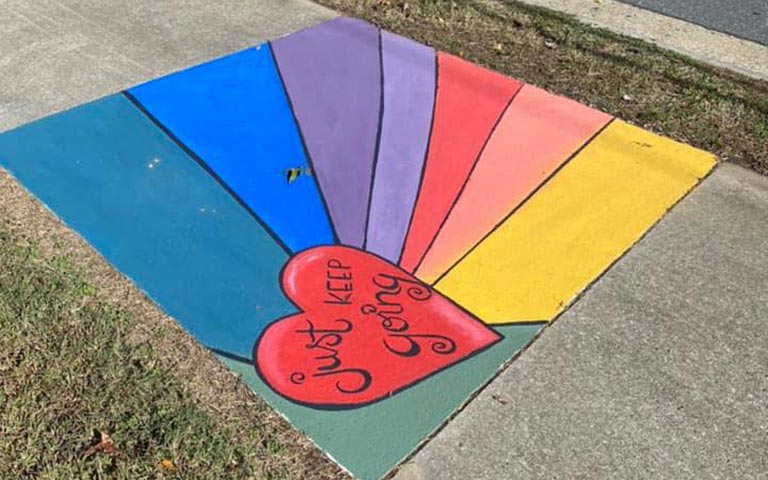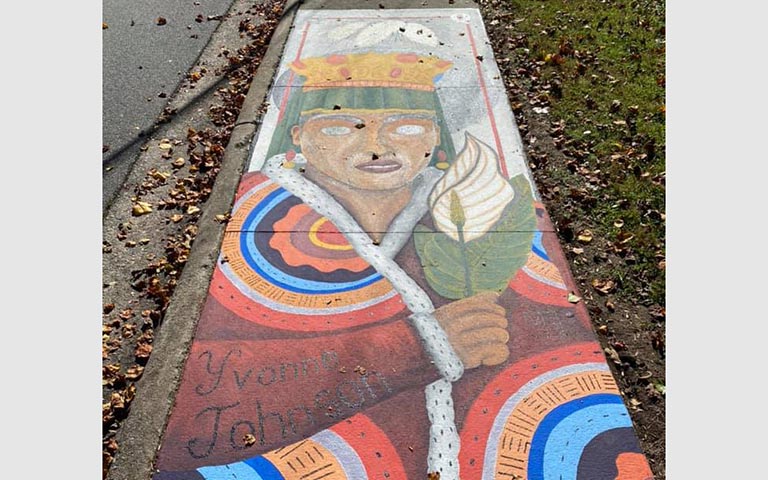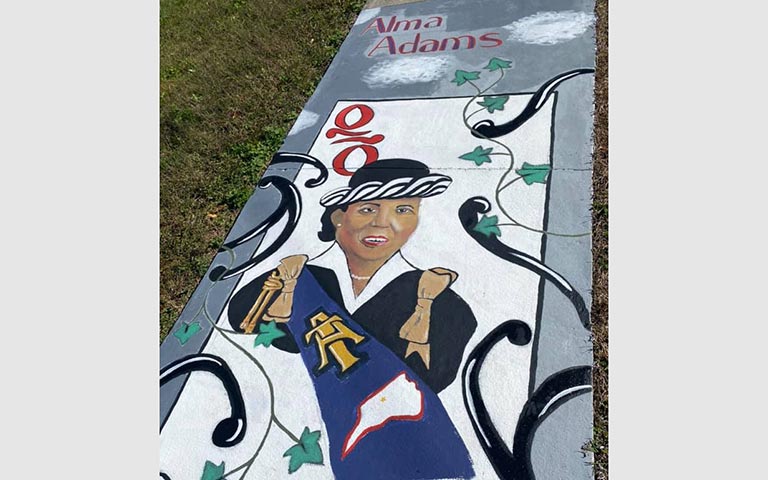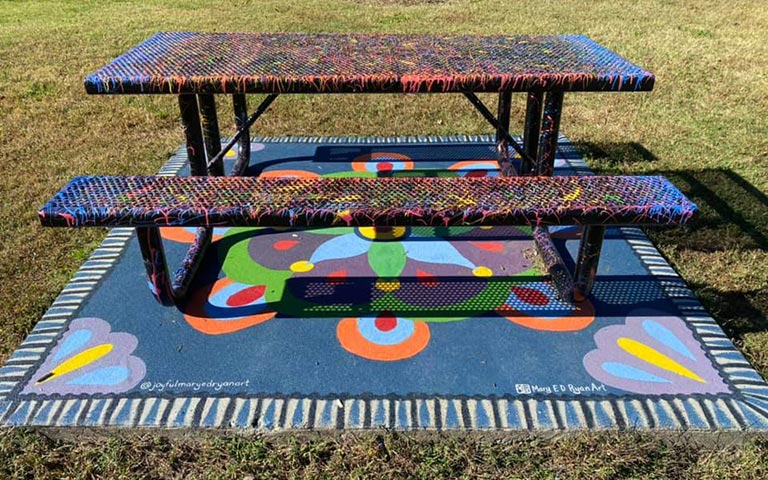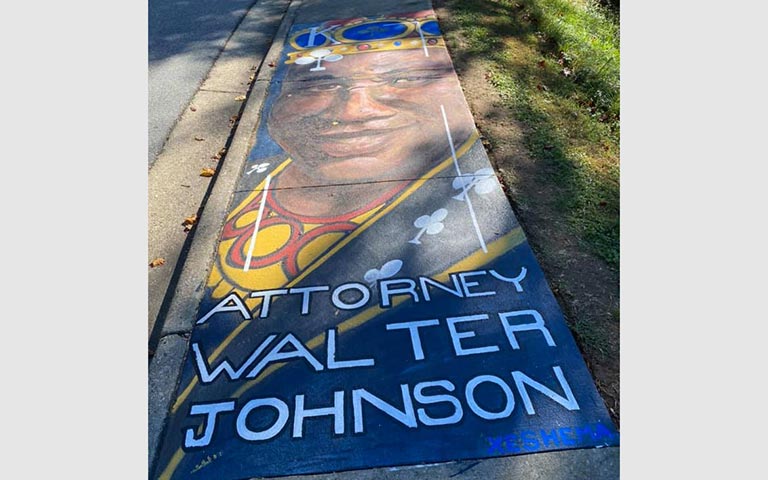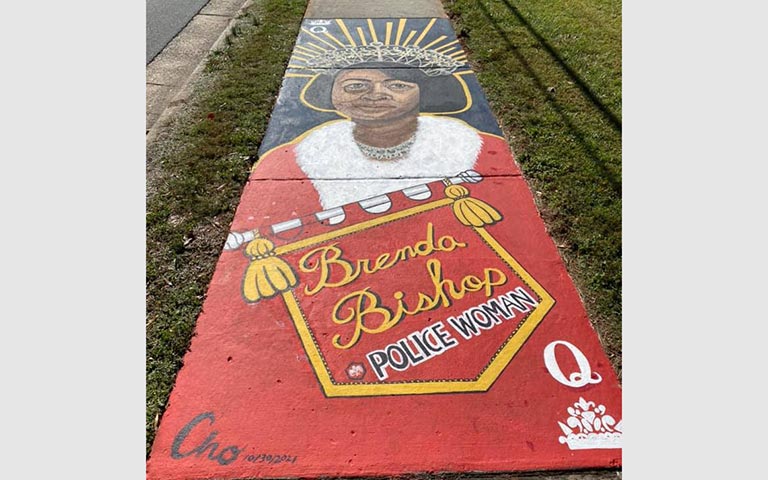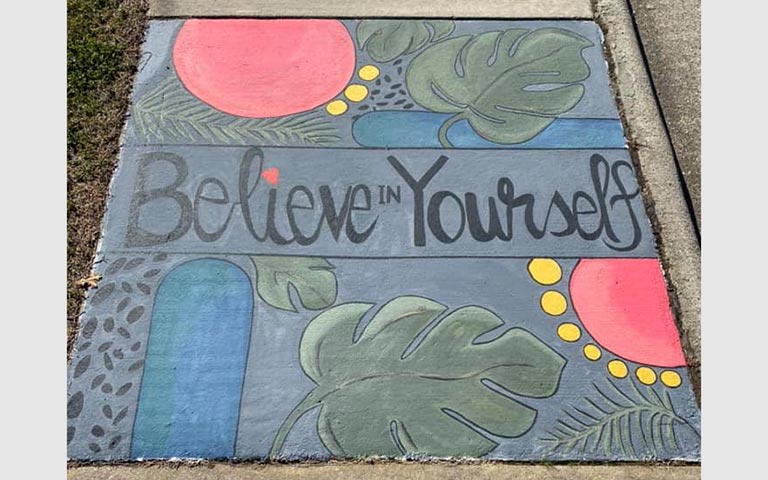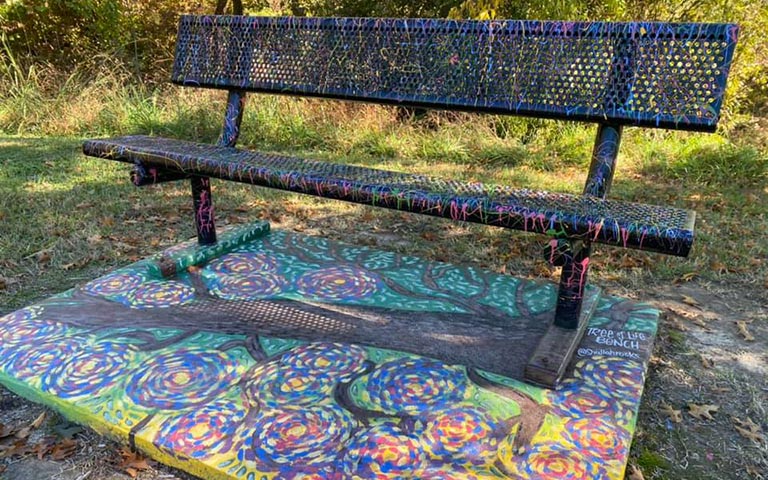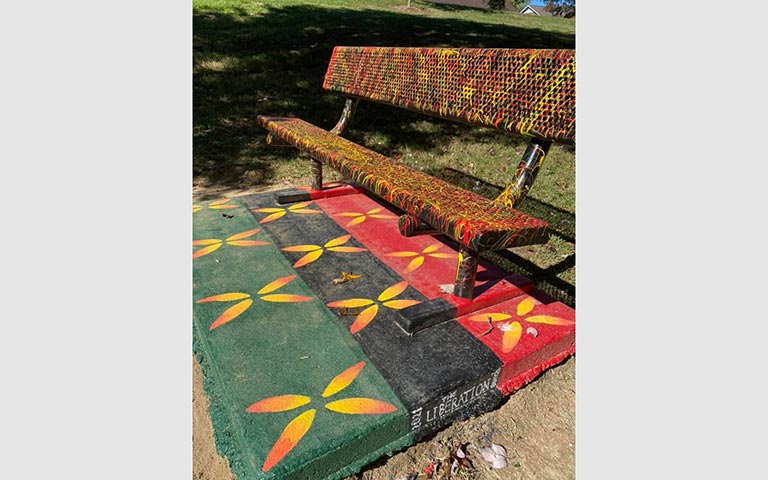Fellowship in Neighborhood Arts highlights the power of arts and community engagement in Greensboro
When the folks at Creative Greensboro initiated the Neighborhood Arts Residency Program, they knew a critical component to the program's success would be in its administration by a fellow artist. That's where Kenan Fellow Karen Archia came in.
The initial six-month Neighborhood Arts program launched in Summer 2021 in response to the city's Cultural Arts Plan and embedded resident artists in three Greensboro neighborhoods: Dudley Heights, Glenwood and Kings Forest. The aim of the program is to "broaden and diversify arts opportunities through artist-led and community informed participatory programming that occurs close to home." The fellowship has since evolved into a full-time Community Partnerships Coordinator position for Archia.
Ryan Deal, Chief Creative Economy Officer for Creative Greensboro, says some of the key strategies identified in the Cultural Arts Plan have been to empower residents and implement neighborhood-based experiences. "When I read that," he says, "I thought that was the perfect space for arts and culture to be a vehicle."
Artists naturally approach work without a set of tightly bound rules and regulations. They invite a sense of possibility and wonder that's attractive to others.
Ryan Deal, Chief Creative Economy Officer for Creative Greensboro
Deal knew that artists would bring creative thinking and problem-solving to the "blank canvas" offered by the program. "Artists naturally approach work without a set of tightly bound rules and regulations," he says. "They invite a sense of possibility and wonder that's attractive to others."
The Neighborhood Arts program was developed in response to that — a first-of-its-kind initiative in Greensboro. With its focus on empowering the community members through the artists to take the lead on the arts projects, Deal said it was vital to create a two-fold role for coordination of the project — one that could both support the work of the artists and navigate the more technical aspects of the administration of the program.
A fellowship funded by the Thomas S. Kenan Institute for the Arts and the Emily Hall Tremaine Foundation provided the practical support to make the position a reality. Archia, an artist with extensive public art experience, has helped it realize its potential. Among her other work, Archia co-owned and operated The People's Perk café from 2013-19; created and led her own community-based art initiative, Public Art Practice (PAP), in the Greensboro community; created the Black Women's Art Collective to showcase the work of Black women artists; and completed a residency with Greensboro's Center for Visual Arts at the beginning of 2021.
"I do not know what we would have done without Karen and the fellowship in general," Deal says. "Having a practicing artist like Karen with such robust and lived experience around the intersection of art and what it means to be an artist, along with someone that's willing on to take on all of the red tape … we wouldn't have been anywhere near as successful as we've been."
"The artists' and Karen's involvement pushed the boundaries of what I, the city and others thought would happen," Deal adds. The waves the first round of the program sent through Creative Greensboro and multiple other city departments have been exciting. "Our hope is that the experiences we are supporting cause the community members to ask what's next and provides the enthusiasm to sustain the program and expand it," Deal says.
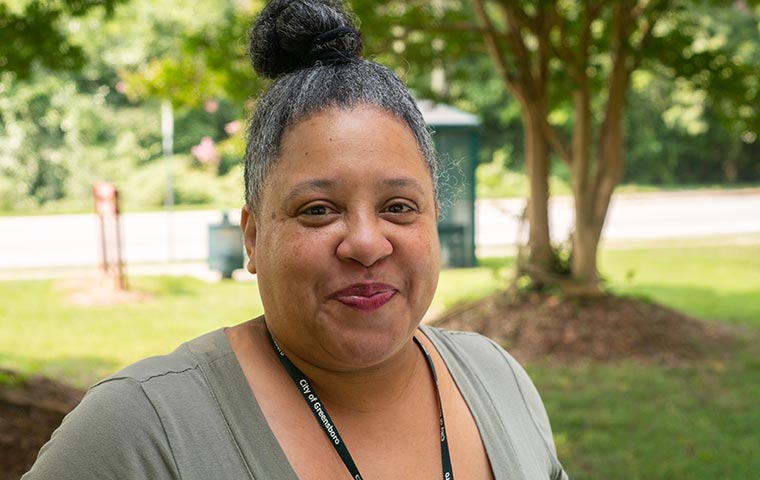
Karen Archia
For Archia, the position has been the culmination of several passions and areas of expertise. "All of my skills, experiences, interests and my love for the people of Greensboro are coming together through my work with the Neighborhood Arts Residency Program," she says. "And most importantly, there is a focus on equity and emphasis on community-led arts. The equity and community aspects are essential for me."
Below, Archia reflects on her experiences with the six-month fellowship and how it has furthered her mission as an artist with a belief that, fundamentally, we all have creative spirits.
Can you describe your work with the Neighborhood Arts Residency Program?
I support and document the work of artists-in-residence in multiple neighborhoods. The program requires a team effort to help each artist do outreach to residents, plan and host arts-related, community-engaged activities, facilitate community decision-making and handle the details of their proposals for their culminating art projects. I also facilitate discussions between the artists-in-residence and am their liaison to Creative Greensboro. I just help keep everything moving toward the project’s goals.
It’s been great to see the enthusiasm and interest from so many people around art-making and creativity. People want their communities to be vibrant and beautiful and to engage in creative activities, and have demonstrated an even stronger desire to work together.
What's exciting about this role?
I’ve been excited by it all, especially the opportunity to sit and make with people, like Ms. Irma, at Kings Forest’s first Paint in the Park event. Ms. Irma knew exactly what she wanted to paint – a penny-farthing. It’s one of those old-style bicycles with the big front wheel.
Sunny Gravely-Foushee, the artist-in-residence for Kings Forest, found a photo of a penny-farthing on her phone for Ms. Irma to use as a reference. She only needed one look and then she started painting a beautiful image of it. Talent is everywhere.
I sat with Ms. Irma and worked on a painting of my own. These events are embodying what I know: that essentially everyone is an artist. We each need time, space, a few materials and encouragement. I keep the painting that I made while I was with Ms. Irma on my desk at the office to remind me that the Neighborhood Arts Residency Program is about how we connect art and people.
What challenges have you encountered?
In many ways, what we are doing with the Neighborhood Arts Program requires cultural shifts, changes in the how we do things in the arts community, who we do them with and why. Creative Greensboro designed a program with art activities and project goals, but everything is centered around community engagement and equity as key goals, and there is also a desire to innovate. So, we’ve already stretched the boundaries on some of the projects.
I think community engagement also opens the door to a host of needs and issues coming to the surface that can go beyond the boundaries of what we consider art as being able to meet or fill. But I don’t see any of these things as challenges, really, just more opportunities. Art has the capacity to accomplish so much more than we “think” it can.
Can you talk about your own art? What kind of pieces do you make? What inspires you?
I consider myself fundamentally an abstract expressionist. Right now, I am doing a lot of Sumi and acrylic ink work and some collage. During my recent residency at the Center for Visual Arts I painted three 36-foot long scrolls using Sumi ink called "Black Lives Inspire." I am in love with the color black and often employ strong black lines in my artwork. I also like to use makeup sponges, lab pipettes, combs or just gravity to make marks.
When I started painting in a more focused manner in 2012, it never occurred to me to try and re-create something that I saw. Painting was a way to express what was going on inside of me in a non-objective way; I let my thoughts and feelings animate my gestures. After studying at Penland in 2019, I added figurative drawing to my art practice because it teaches me how to see and about myself.
As my art practice has involved, I often work through embodied experience, such as crying, to get to a place of abstraction. I take inspiration from the things I see and experience, including my interactions with people.
Why is the Neighborhood Arts Residency Program important?
From its inception, the Neighborhood Arts Residency Program was designed to invest in communities that have been historically underinvested in. This point can’t be overemphasized. It’s critical to understand and accept the history of racial discrimination, and to do something to correct the wrongs in a substantive way.
Also, because we’ve asked the artists to focus on community engagement, that requires more listening and community decision-making. We’re encouraging neighbors to take ownership of public art. The neighborhood in “neighborhood arts” means community-building, people and the relational aspects of what we and the artists are doing are the most important parts of the program.
by Corrine Luthy
January 19, 2022
